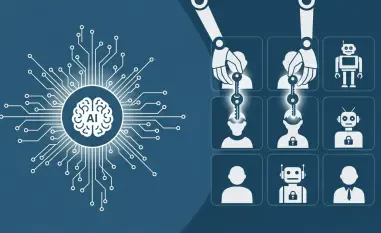In an era where cyber threats are escalating at an unprecedented rate, businesses must prioritize robust cybersecurity measures to safeguard their digital assets. The importance of cybersecurity risk assessment tools has never been more crucial as these tools play a fundamental role in identifying vulnerabilities, mitigating risks, and fortifying defenses against cyberattacks. As incidents increase in frequency and sophistication, organizations need dependable solutions to stay ahead of potential threats. The article “Top 12 Cyber Security Risk Assessment Tools For 2025,” published on November 20, 2024, delves into the significance of these tools and highlights the top options available in 2025, helping organizations maintain a proactive defense posture.
The Growing Importance of Cybersecurity Risk Assessment
As cyberattacks become more frequent and sophisticated, the need for effective cybersecurity risk assessment tools has never been greater. These tools enable organizations to evaluate and address potential vulnerabilities within their digital environments. Over the years, cyberattacks have exponentially increased. For instance, there was a 30% rise over the same period in Q2 2023, underscoring the urgency for businesses to adopt these tools. With 83% of IT leaders incorporating workflow automation into their digital transformation efforts, the shift towards automated solutions for improved security workflows is evident.
Cybersecurity risk assessment involves identifying, analyzing, and prioritizing risks associated with an organization’s digital assets. These assessments help pinpoint vulnerabilities and act as preventive measures against potential exploitation by threats. IBM’s estimation that cloud-based data accounts for 82% of data breaches further highlights the need for focused solutions to protect sensitive information.
Key Benefits of Cybersecurity Risk Assessment Tools
Several factors underscore the growing requirement for cybersecurity risk assessment tools. Enhanced threat visibility is one of the primary benefits, as these tools offer extensive visibility across networks, endpoints, and cloud environments, facilitating precise threat detection and risk mitigation. Automated risk identification minimizes manual analysis efforts, allowing security teams to focus on managing critical risks. Thus, early detection and mitigation of vulnerabilities help prevent breaches, securing sensitive information and reducing potential financial and reputational damage.
Regulatory compliance is another significant advantage. These tools enable organizations to adhere to stringent regulatory standards such as GDPR, HIPAA, and PCI-DSS, ensuring compliance through robust security practices. Routine risk assessments also help mitigate vulnerabilities cost-effectively compared to the aftermath of potential cyber incidents. By continuously monitoring and evaluating the digital environment, organizations can stay ahead of potential threats and effectively allocate their resources for better cybersecurity management.
Top Cybersecurity Risk Assessment Tools for 2025
Examining the top cybersecurity risk assessment tools for 2025 reveals a variety of options that offer unique features and core benefits, aiding organizations in successfully managing cyber risks. These tools range from AI-driven platforms to customizable solutions, each designed to address specific cybersecurity needs effectively.
SentinelOne Singularity™
SentinelOne Singularity™ employs AI-driven cybersecurity for extended detection and response (XDR) with high visibility and autonomous response capabilities. Leveraging advanced AI technology, it provides comprehensive protection across endpoints, cloud environments, networks, and identities. Key features include continuous threat scanning, automated incident response, extensive endpoint protection, real-time multi-layer analytics, and visibility across diverse environments. This solution significantly reduces the need for manual incident response, ensuring efficient resource management and enhancing network visibility.
Alex Burinskiy, Manager of Security Engineering, commended SentinelOne for its efficiency and contribution to the maturation of their security program. The autonomous capabilities of SentinelOne ensure that organizations can quickly detect and respond to threats, minimizing the impact of potential breaches.
ProcessUnity
ProcessUnity focuses on third-party risk management and provides tools for evaluating risks related to third-party vendors, auditing, and compliance tracking. Featuring Vendor Risk Assessment, Automated Workflows, Compliance Tracking, and Reporting and Analytics, ProcessUnity is particularly useful for organizations that rely heavily on third-party vendors. Ensuring that these vendors adhere to strict security protocols is essential to maintaining the overall cybersecurity posture of the organization.
By streamlining the process of evaluating third-party vendors, ProcessUnity helps organizations minimize the risks associated with outsourcing and supply chain vulnerabilities. The detailed reporting and analytics capabilities provide valuable insights into vendor performance and compliance, enabling businesses to make informed decisions about their partnerships.
Cybereason
Cybereason offers an endpoint detection and response (EDR) platform known for behavioral threat detection and risk assessment. Key features include behavioral threat detection, automated incident response, comprehensive endpoint visibility, and integrated threat intelligence. This platform is designed to provide a holistic view of endpoint security, making it easier for organizations to detect and respond to threats in real-time.
By focusing on behavioral threats, Cybereason can identify and mitigate potential risks that traditional signature-based detection methods might miss. The integrated threat intelligence ensures that security teams are equipped with the latest information on emerging threats, allowing them to be proactive in their defense strategies.
LogicGate
LogicGate is a customizable risk management solution that scales with enterprises, using template-based processes to meet diverse security requirements. Its features include Customizable Risk Workflows, Automated Risk Assessments, Compliance Management, and Reporting and Dashboards. LogicGate’s flexibility makes it suitable for organizations of all sizes, allowing them to tailor the tool to their specific needs.
The ability to customize risk workflows and assessments ensures that organizations can address their unique cybersecurity challenges effectively. By providing comprehensive compliance management and reporting capabilities, LogicGate enables businesses to maintain visibility and control over their risk management processes and ensure regulatory compliance efficiently.
Tenable Vulnerability Management
Tenable offers continuous monitoring and risk assessment, identifying vulnerabilities within IT infrastructures. Key features include Continuous Vulnerability Scanning, Risk-Based Prioritization, Asset Discovery, and Integration with Security Tools. Tenable’s comprehensive approach ensures that organizations can stay ahead of potential threats by continuously monitoring their IT environments.
Tenable’s focus on risk-based prioritization helps security teams identify and address the most critical vulnerabilities first, optimizing resource allocation and maximizing the effectiveness of mitigation efforts. The seamless integration with existing security tools further enhances the overall cybersecurity framework of the organization.
Archer
The Archer GRC Platform provides tools for risk assessment, compliance tracking, incident management, and reporting to help organizations manage risk and ensure compliance efficiently. Archer’s integrated approach to governance, risk, and compliance (GRC) makes it a valuable tool for organizations looking to streamline their risk management processes.
By consolidating various GRC functions into a single platform, Archer enables organizations to maintain a comprehensive view of their risk landscape and ensure that their risk management strategies align with regulatory requirements. This holistic approach simplifies the administration of compliance programs and enhances the organization’s ability to respond to incidents quickly.
MetricStream
MetricStream streamlines risk identification, assessment, and incident response, offering features like Risk Assessment Frameworks, Compliance Management, Incident Reporting, and Analytics and Dashboards. MetricStream’s robust analytics capabilities provide organizations with the insights they need to make informed decisions about their cybersecurity strategies.
MetricStream’s focus on data-driven decision-making ensures that organizations can leverage comprehensive analytics to identify potential threats and vulnerabilities. By incorporating advanced reporting features, MetricStream helps businesses maintain transparency and accountability in their cybersecurity efforts.
Conclusion
In an age where cyber threats are rising at an unprecedented rate, businesses must prioritize comprehensive cybersecurity measures to protect their digital assets. Cybersecurity risk assessment tools have never been more essential, playing a key role in identifying weaknesses, managing risks, and fortifying defenses against potential cyberattacks. As incidents become more frequent and sophisticated, organizations require reliable solutions to stay ahead of emerging threats. The article “Top 12 Cyber Security Risk Assessment Tools For 2025,” released on November 20, 2024, explores the importance of these tools and showcases the best options available for 2025. This guide helps organizations adopt a proactive defense approach, ensuring they remain equipped to handle the evolving landscape of cybersecurity challenges. The detailed analysis provided in the article assists businesses in choosing the right tools to effectively safeguard their operations and maintain security resilience in the face of growing cyber risks. By staying informed about the latest advancements in cybersecurity, organizations can develop stronger defensive strategies and mitigate potential damage from cyber incidents.













